#Toliman c
Explore tagged Tumblr posts
Text
Alpha Centauri Characters










#Neptune Adventure#Alpha Centauri#Rigil Kentaurus#Toliman#Proxima Centauri#Xandian#Broccolo#Ursula#Linda#Quellus#Kine#Art#New Art#Rigil Kentaurus b#Toliman b#Toliman c#Proxima Centauri b#Proxima Centauri c#Proxima Centauri d
10 notes
·
View notes
Text
Cybertron's Location
Okay so Alpha Centauri is named as Cybertron's star system in multiple continuities.
Easy, right? Just make up a planet for Cybertron to be. Plausible enough that there's one out there we don't know about.
NOPE. I found a spot for it.
The Alpha Centauri system has three stars in it. These are Rigil Kentaurus (α Centauri A), Toliman (α Centauri B), and Proxima Centauri (α Centauri C). I'm going to be calling them by their non-ABC names for distinction.
Alpha Centauri, as we see it, is Rigil Kentaurus and Toliman's lights being indistinguishable from one another. Those two are a binary star system of sun-like stars, so their orbit intersects and they look something like this:

Meanwhile, Proxima Centauri is a red dwarf, and orbits at a pretty far distance, like so:

It's still part of the same star system because it still orbits around a common point, but in any planet that orbits Proxima, Rigil and Toliman just look like exceptionally bright stars in its sky.
So the question THEN is, which star does Cybertron orbit?
Proxima's the most obvious candidate. It even has a full planetary system:
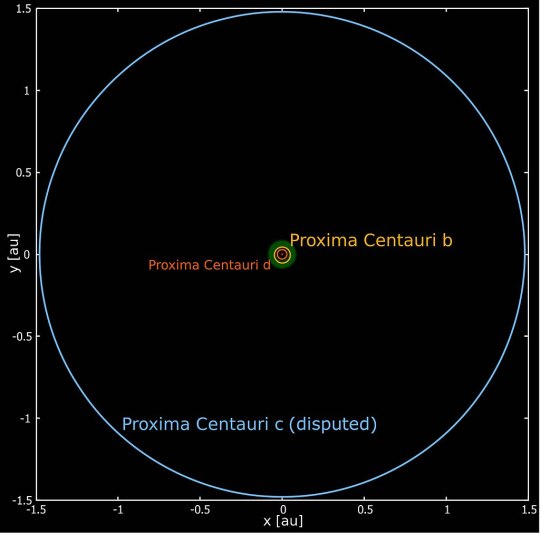
Proxima Centauri b is in Proxima's habitable zone (the area where water could feasibly exist as liquid), and it's just a little bigger than Earth.
Generally speaking, Cybertron is depicted as larger than Earth, so let's set that aside for this post.
Proxima Centauri d is a tiny planet that's closer to Proxima and no smaller than a third Earth's size.
Proxima Centauri c is either a super-Earth or a gas dwarf, about 7 times Earth's mass, which is disputed both in its nature and whether or not it's really a planet (it's complicated). Regardless, it's outside the habitable zone.
So it could be Proxima c. That's our default option. The biggest problem is the lack of a habitable zone, because, while giant robots don't necessarily need comfortable heat to live, there's the whole "acid rain" and "sea of rust" deal that'd be hard in a planet that far from its sun.
Granted, sometimes Cybertron is seen hurtling through space without a sun or any of those features to speak of, but I'd like to account for it.
So what about the other two?
Toliman was claimed to have a planet orbiting it in 2012 (α Centauri Bb), but by 2016, it was more or less conceded that said planet didn't exist.
Rigil Kentaurus, on the other hand...
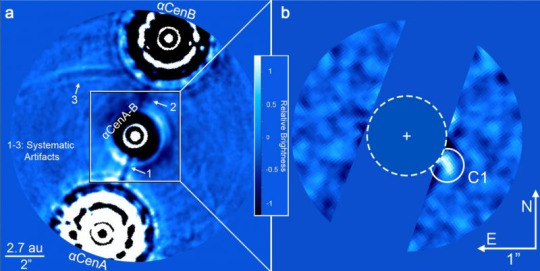
Meet Candidate 1 (α Centauri Ab).
It orbits within Rigil's habitable zone, has a period of about a year, and has a mass between Neptune and half of Saturn, with possible habitable moons.
Does it exist? Maybe.
The thing is about Candidate 1 (yes that is its real name) is that it wasn't observed for long enough to confirm its existence. It COULD be a planet. It could also be dust that got captured, or an artifact of the observational instruments.
THIS is my proposal for Cybertron.
TLDR: There's a (possible) planet that orbits the brightest star of the Alpha Centauri star system in its habitable zone and it's bigger than Earth.
#long post#transformers#maccadam#worldbuilding#theory#cybertron#this is definitely 100% cybertron in MoL#but i feel like it could work for multiple continuities#TFP is tricky given the whole Unicron-is-Earth thing. that one would more likely be proxima b#just for size consistency between unicron and primus#and it doesn't work for the bayverse cybertron because that's saturn-sized#but look. neptune is 4x as big as earth#this is possibly a bit bigger than that#the dimensions for candidate 1 are between 3.3 and 7 earth radii#and the average size of a cybertronian (excluding things like minibots/minicons) is between 3.3 and 7 humans tall#anyways i really hope i did the image id on that last picture right. that thing is HARD to understand#real coffee hours
241 notes
·
View notes
Text
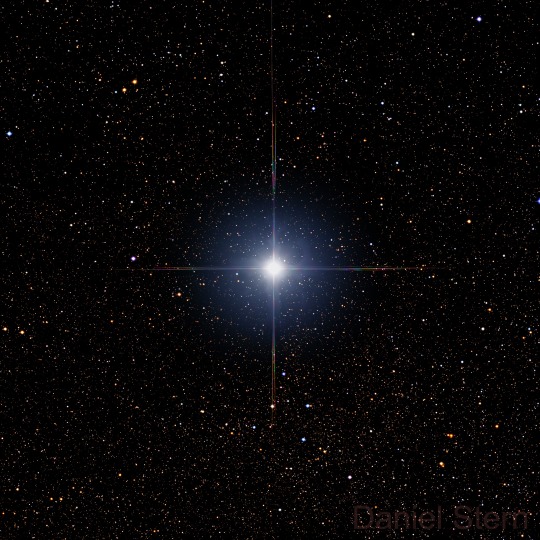
α Centauri AB, two of the nearest stars to Earth // Daniel Stern
This star system is made up of three stars. The two in this image are Rigil Kentaurus (α Centauri A) and Toliman (α Centauri B). Proxima Centauri (α Centauri C) is out of view.
The name Rigil Kentaurus is a Latinization of the Arabic name Rijl al-Qinṭūrus, meaning "foot of the centaur."
The name Toliman comes from the Arabic phrase aẓ-Ẓalīmān, meaning "the ostriches."
#astronomy#astrophotography#star#star system#triple star system#alpha centauri#rigil kentaurus#toliman#etymology#centaurus
106 notes
·
View notes
Text
Research: Alpha Centauri
Alpha Centauri (α Centauri, α Cen, or Alpha Cen) is a star system in the southern constellation of Centaurus. It consists of three stars: Rigil Kentaurus (α Centauri A), Toliman (α Centauri B), and Proxima Centauri (α Centauri C). Proxima Centauri is the closest star to the Sun at 4.2465 light-years
In the future, Alpha Centauri is planned to be the first target for a crewed or robotic intersteller exploration. Currently, exploration of Alpha Centauri is extremely unlikely, as it would take several millennia to make it. However, with the use of nuclear pulse propulsion or laser light sail technology, the journey could take as low as 20 years.
In 2017, NASA released a mission concept involving a spacecraft being sent to Alpha Centauri in 2069, which was intentionally done to coincide with 100 years since the moon landing, back in 1969.
However, due to the long travel times, it was estimated that the space craft would get there in the year 2113, taking 44 years to leave Earth, and make it to the "new" constellation. Ontop of this, it would take an additional 4 years for a signal to make it back to Earth.
0 notes
Text
Constellation: Centaurus

For stargazers living between the latitudes of 25°N to 90°S, look towards the southern skies for Centaurus as May approaches.
Being the 9th largest constellation, it covers an area of 1060 square degrees. This particular patch of sky has a lot to offer since it is embedded in a splendidly bright and intricate part of the Milky Way. For me, the entire expanse of sky encompassing Scorpio, Sagittarius and Centaurus? *chefs kiss* (There are so many interesting deep space objects to see in Centaurus so I’ll probably talk more about it in another post)
For most of the illustrated star maps, Centaurus was always shown to be spearing or sacrificing Lupus, the adjacent wolf constellation. It is said to represent an ancient pagan festival known as Lupercalia and Centaurus is bringing Lupus to the sacrificial altar, Ara. In Babylonian culture, the constellation was depicted as the Bison-man and associated it with their Sun god Utu. Others relate the constellation to the wise Chiron, mentor of great Greek heroes such a Achilles, Asclepius and Heracles to name a few.
Stars of Centaurus

Its a wonderment to stare at this patch of sky since it contains approximately 281 stars below the mag. 6.5 (the dimmest stars that can be observed by the unaided eye) within its borders. It can be overwhelming but 11 main stars can be joined to resemble the outline of a classical centaur. Only 9 stars have official names recognized by the IAU. I have them labelled in the image above along with the meanings behind those names for a lil trivia. The names are mostly of Arabic and Chinese origins.
It boasts magnificent star clusters and home to the two brightest stars of the night sky. Leading the way are Rigel Kentaurus (α-cen) and Hadar (β-cen) forming the front feet of the centaur. These 2 stars are also an important asterism in navigation as mentioned in a previous post called as “the pointers” aiding in identifying the Southern Cross. Holding the position as the 4th and 10th brightest star in the night sky, α & β-cen blazes at an apparent mag of -0.27 & 0.61. They are hard to miss.
Rigel Kentaurus is a triple star system consisting of:

Rigil Kentaurus itself (α-centauri A) & Toliman (α-Centauri B)- 2 sun-like stars locked in a binary orbit of 79.9 years.
Proxima Centauri (α-Centauri C) – An 11th magnitude red dwarf that needs a telescope to be seen. Famously known as the closest star to our Sun only 4.24 LY away. Only discovered in 1915 since it was so faint. It is an outlying member of the triple star system with an orbital period around 550,000 years!
I must at least mention the Omega Centauri Cluster

That fuzzy spot on the centaur's back is one of the oldest star clusters. Believed to be at least 12 million years old. Almost as ancient as the universe itself. It is also the largest known globular cluster in the Milky Way, estimated to have 1 million stars. This cluster holds many titles along with being the closest cluster to our solar system at 17,000 LY away. With that, it shines as the brightest globular cluster in the night sky.
Identifying Centaurus
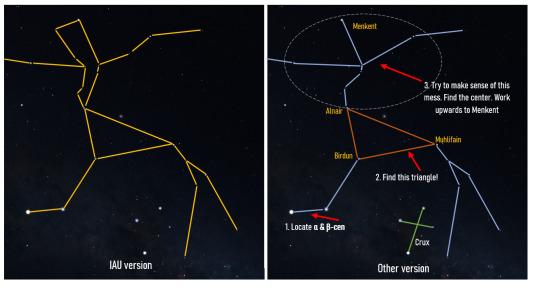
There are 2 known patterns for Centaurus as you can see here. The one on the left is official pattern recognized by the IAU. The right side is more commonly used in other star maps or references. When it comes to identifying constellations, its better to stick with anything less convoluted so we'll go for the right side. This version simplifies Centaurus's upper body into a stick figure.
The easiest way to locate Centaurus is by looking for Crux first facing southward. The pointers (α&β-Cent) & Crux are basically a matching set and the fact that they are fairly bright stars make it even easier to locate! Once you got the Pointers, make your way up to Alnair, Muhlifain & Birdun. These are fairly bright stars of mag. 2 that form a right-angled-triangle-lower-body. When you get a hold of that triangle, you're all set! Simply move upwards and try to visualize a stick figure.
Most of the stars that make up the torso are quite dim (mag. 2.5 -4) making it even harder to make anything out of it for beginners. I used to call that area as "a huge mess" It helps to start from Alnair (top of the triangle) and go upwards to the center, Mu & Nu- Cent. Then, upwards to Menkent, a fairly bright orange star of app. mag. of 2.04. From there work your way out to the arms. Same goes for the hind legs. Best time to view the centaur is in May where it is fully upright in the sky in its full glory at 10pm onward.
Happy star hunting!
#astronomy#stargazing#space#stars#constellations#nature#navigation#chiron#constellation#centaurus#alpha centauri#universe
0 notes
Text
Ok there’s tons of cute art and fic and metas our there connecting Crowley’s past as a star maker to the star he wanted to run away to and the romance of Alpha Centauri being two stars that orbit each other and it’s all really sweet, but I can’t help thinking...
Y’all know Alpha Centauri is a triple star system right?
Alpha Centauri A (Rigil Kentaurus), Alpha Centauri B (Toliman) and Alpha Centauri C (Proxima Centauri).
A and B form the super romantic pairing.
C is a red dwarf, orbits much farther out (closer to Earth), isn’t visible to the naked eye, and is the one that actually has confirmed planets in the habitable zone.
Like, I honestly don’t know what romantic thing you can do with this information but i honestly love the sort of angsty/unrequited romance feel of it which doesn’t seem like a good fit for this ship (more of an OT3 thing? Or some kind of identity thing idk?) but I’m just saying if anyone pulls it off idk tag me and I’ll name a cat after you in the future.
#good omens#good omens meta#alpha centauri#plot bunnies#not going to write this one either#no one ever remembers poor Proxima
228 notes
·
View notes
Photo

Continuing on with my digging into the locations of Cybertron throughout continuity streams, there is a common star system often designated to be the home of (or origin of) Cybertron throughout a number of continuities.
Within the Aligned (Uniend 812.21 κ and also potentially Uniend 911.05 α), Marvel (Primax 984.0 γ and Primax 984.20 γ), and Dreamwave (Aurex 402.24 γ) continuities, Cybertron is confirmed to have originated within the α Centauri system, located in the Centaurus constellation.
This star system is visible to the naked eye in the Southern hemisphere and a slither of the North, appearing as a single star with an apparent magnitude of -0.27 making it the brightest star within its constellation and the third brightest star in the night sky. It is a trinary system consisting of two stars akin to our own, a G2V which is the same spectral class as the Sun albeit it is 1.1 solar masses, making it 10% more massive, a K1V (10% less massive than Sol at 0.907 M☉), and an M class, or red dwarf, star with a mass of 0.12 M☉. Both larger stars are extremely similar to the sun in surface temperature (between 5000 - 6000K), life stage (yellow main sequence) and metallicity (ratio of elements contained within). The three stars are known as, in descending mass: α Centauri α (Rigil Kentaurus), α Centauri β (Toliman), and α Centauri C (Proxima Centauri) which orbits the other two, larger stars at a vast distance.
The α Centauri star system is the closest neighbour of our own, with Proxima orbiting the system’s barycentre at just 4.37 Lightyears away. It has one confirmed Earth-like, terrestrial exoplanet orbiting Proxima Centauri. This planet is called Proxima AB and is orbiting within the Goldilocks (habitable) zone. There has also been many other hypothetical planets suggested to inhabit the α Centauri system. Unfortunately, however, Proxima Centauri is a tempestuous star and released a superflare on 18/3/2016 that was so potent, it would have been lethal to all life as we know it. It is also suspected that the quiescent X-ray emissions produced by Proxima Cebtauri are capable of stripping a planet of its atmosphere within a mere five years. It is unlikely, as a result, that life as we know it could exist upon the one confirmed exoplanet.
#cybertron#transformers#fall of cybertron#war for cybertron#transformers marvel#transformers dreamwave#transformers prime#transformers aligned
34 notes
·
View notes
Text
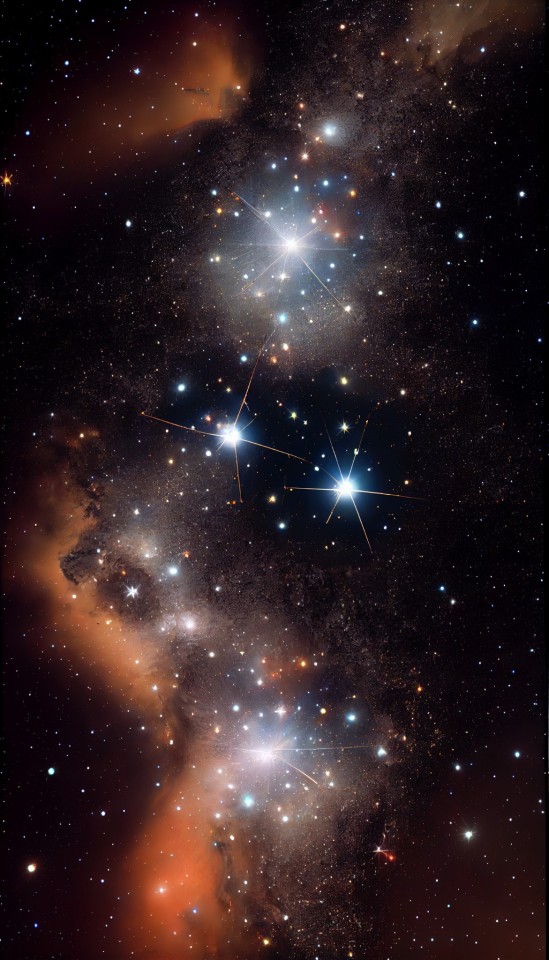
Triple star system Alpha Centauri
It is made up of three stars: Alpha Centauri A (Rigil Kentaurus), Alpha Centauri B (Toliman) and Alpha Centauri C (Proxima Centauri). It is located about 4.36 light-years (41.2 trillion kilometers) away.
It is a system formed by three gravitationally united stars. A ternary system of stars orbiting a center of mass, Alpha Centauri A and Alpha Centauri B, plus a third red dwarf star, Alpha Centauri C (Proxima Centauri), which orbits the two stars Alpha Centauri A and B.
Proxima Centauri is also the closest star to the Sun at 4.2465 light-years.
Image: Talon Abraxas
0 notes
Photo
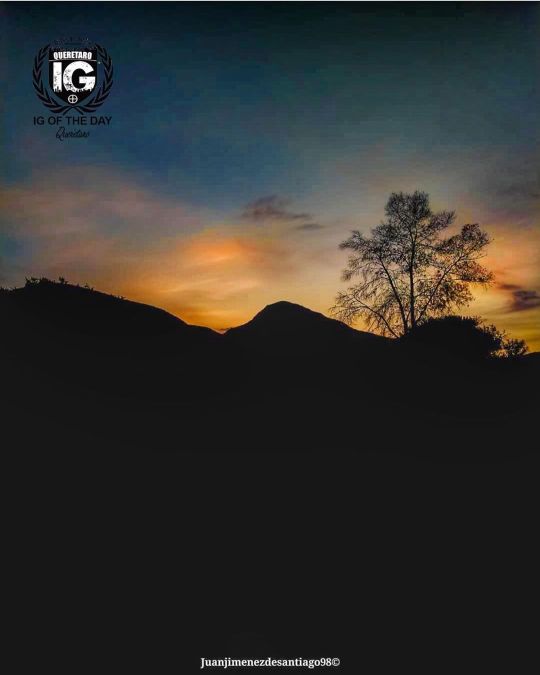
PRESENT IG OF THE DAY P H O T O | @juanjimenezdesantiago98 S E L E C T | @bulnuri L O C A T I ON | 📍San Antonio Toliman, Qro. 🇲🇽 D A T E | 28.03.2020 F E A T U R E D T A G | #ig_queretaro #queretaro F O L L O W U S | @Ig_queretaro @igworldclub @ig_mexico_ @photocaminantes . . . #mexico 🇲🇽 #ig_mexico #igworldclub #igersmexico #worldcaptures #mexico_maravilloso #mexicodesconocido #loves_madeinmexico #pasionxmexico #loves_mexico #vive_mexico #24hourproject #wu_mexico #ig_france #reporteqro #igersiran #igersperu #igersqro #ig_italia #nikon #swpa #igmasters #natgeomx #ig_españa #igersmilano #picoftheday #igerscatalunya #primerolacomunidad 🇲🇽 (en Tolimán, Queretaro De Arteaga, Mexico) https://www.instagram.com/p/B-R7fAfpUwK/?igshid=9ei5cht05jw
#ig_queretaro#queretaro#mexico#ig_mexico#igworldclub#igersmexico#worldcaptures#mexico_maravilloso#mexicodesconocido#loves_madeinmexico#pasionxmexico#loves_mexico#vive_mexico#24hourproject#wu_mexico#ig_france#reporteqro#igersiran#igersperu#igersqro#ig_italia#nikon#swpa#igmasters#natgeomx#ig_españa#igersmilano#picoftheday#igerscatalunya#primerolacomunidad
0 notes
Text
Alpha Centauri
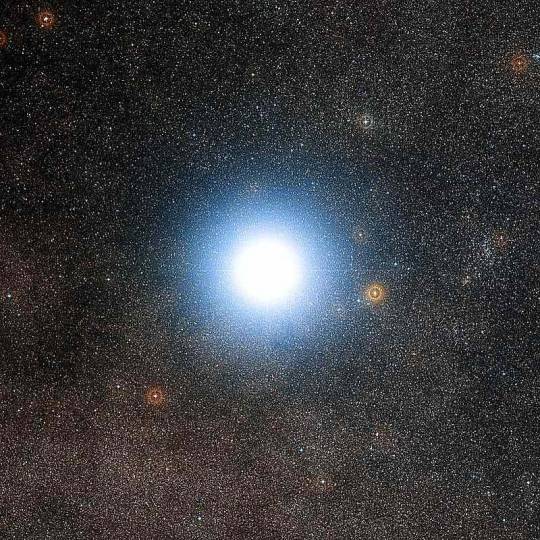
“The closest star system and closest planetary system to Earth's Solar System at 4.37 light-years from the Sun. It is a triple star system, consisting of three stars: α Centauri A (officially Rigil Kentaurus), α Centauri B (officially Toliman), and α Centauri C (officially Proxima Centauri).”
“Alpha Centauri A and B are Sun-like stars, and together they form the binary star Alpha Centauri AB. To the naked eye, the brightest star in the southern constellation of Centaurus and the third-brightest in the night sky, outshone only by Sirius and Canopus.
Alpha Centauri A has 1.1 times the mass and 1.519 times the luminosity of the Sun, while Alpha Centauri B is smaller and cooler, at 0.907 times the Sun's mass and 0.445 times its luminosity. The pair orbit around a common centre with an orbital period of 79.91 years. Their elliptical orbit is eccentric, so that the distance between A and B is about the distance between Pluto and the Sun, to 11.2 AU, or about the distance between Saturn and the Sun.”
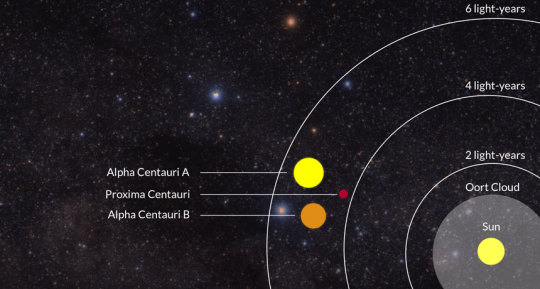
“Astronomers announced in August 2016 that they had detected an Earth-size planet orbiting Proxima Centauri. The newfound world, known as Proxima b, is about 1.3 times more massive than Earth, which suggests that the exoplanet is a rocky world, researchers said.
The planet is also in the star's habitable zone, that just-right range of distances where liquid water can exist. Proxima b lies just 4.7 million miles (7.5 million kilometers) from its host star and completes one orbit every 11.2 Earth-days. As a result, it's likely that the exoplanet is tidally locked, meaning it always shows the same face to its host star, just as the moon shows only one face (the near side) to Earth.
However, it's unclear just how habitable Proxima b is from today's telescopes. This means that astronomers need to run models and do comparative studies to better understand how habitable the planet might be. As a start, the planet needs a closer look for investigators to look for signs of an atmosphere. From there, the investigators can extrapolate if that atmosphere (if present) allows liquid water to flow on the surface. Even the surface temperature of the planet depends on the atmosphere, which would also play into habitability characteristics.
Because Proxima b is so close to a red dwarf, habitability problems are already coming to scientists' minds. For one thing, the planet is so close that it likely is tidally locked to the star, meaning that one side of the planet is always facing the star. This means one side of the planet would be very warm, while the opposite side would be very cold – unless winds could distribute the heat around the planet. That makes it hard for life to exist.
But the planet's close distance to the red dwarf presents other problems too. Red dwarfs are unstable stars, particularly when they are young – they have a lot of stellar activity and produce charged particles, which can produce intense radiation on nearby planets. Some of this radiation can strip molecules off the top of a planet's atmosphere and thin it over time, according to 2017 studies led by the NASA Goddard Space Flight Center in Greenbelt, Maryland.
Studies of red dwarf stars are ongoing to better understand the habitability of Proxima b. In November 2017, another planet in the habitable zone of a red dwarf was discovered that's almost as close to Earth as Proxima b is. Called Ross 128b, this planet orbits a red dwarf star that appears much quieter than that of Proxima b. The research team said that finding out more about its atmosphere will require a next-generation telescope such as the European Extremely Large Telescope, the Giant Magellan Telescope and the Thirty Meter Telescope that all are expected to bbe active in the 2020s. (The James Webb Space Telescope, set to launch in 2020, can't do the search itself since the planet does not transit across the face of its star.)”
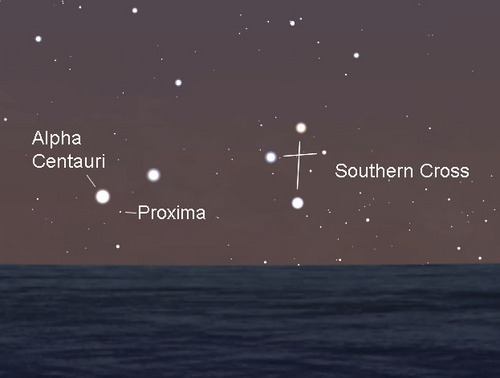
“From Earth, Alpha Centauri appears as a single point of light: It's one of the brightest stars in the southern sky. Through a telescope, one can make out the system's two stars Alpha Centauri A and its smaller, dimmer companion Alpha Centauri B. Each has a mass that is about the same as the Earth's sun, and they orbit one another at about the same distance that Uranus orbits the sun.
A third star, Proxima Centauri, is slightly closer to Earth — it's actually the nearest star outside the Earth's solar system. That star is much smaller and dimmer: it's just 0.12 times the mass of the sun, or 1.5 times the size of Jupiter, and it shines faintly at a cautious distance from the other two. In fact, some astronomers question whether it's part of the system at all, or just passing through.
Astronomers first realized the bright star Alpha Centauri was a tightly orbiting pair in 1689, and Proxima Centauri was first spotted in 1915.
In 2012, researchers used an instrument called the High Accuracy Radial velocity Planet Searcher to detect a planet around Alpha Centauri B. The instrument, which is part of the European Space Agency's La Silla Observatory in Chile, measured tiny wobbles in the star that suggested that a planet was orbiting it — likely just a bit bigger than Earth, orbiting its star every 3.24 days.
Since then, researchers have tried to verify the planet's existence using transits — a slight dimming in the star as the planet passes by — but haven't found additional, conclusive evidence. And a re-examination of the original study suggested that the planet might be an artifact of the data processing, according to a report by the deep-space exploration site Centauri Dreams.
Regardless, because of their nearness, the Alpha Centauri twins and Proxima Centauri offer a promising location to look for planets at a distance — especially using direct imaging — if researchers can filter out the complexities of the double star. And they also seem to be a good place to visit. The distance may be vast, but it could be relatively easy for Starshot's nanocraft or other interstellar travelers to blast through and beam back information to Earth about the system with a bit more than a four-year delay. While planets orbiting those stars would see a starscape that is quite different from Earth's, the stars' similarity to the sun would make their habitable zones an intriguing place to look for Earth analogues.
"Astronomers estimate that there is a reasonable chance of an Earth-like planet existing in the 'habitable zones' of Alpha Centauri's three-star system," Breakthrough Starshot representatives said in a statement. "A number of scientific instruments, ground-based and space-based, are being developed and enhanced, which will soon identify and characterize planets around nearby stars." ”
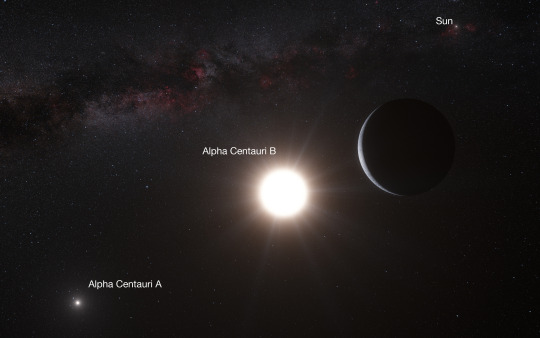
Nasa is believed to be studying the life potential for the 3 planets withn the Alpha Centauri solar system. All the planets there have so far been disovered to be rocky planets slightly bigger than Earth raising the question of are they or will they ever be habitable to humans. So far Nasa is not planning any missions considering the Alpha Centauri which makes sense because maybe we should try to first discover out own solar system to the point where we understand it well enough to even think about moving out of this system.
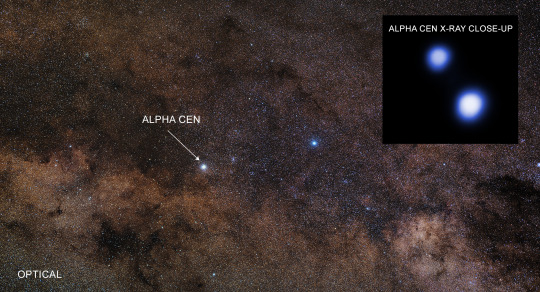
Due to the fact these planets could be habitable for humans a lot of people and especially conspiracy theorists came to the conclusion this solar system might be home to an alien species. There’s a lot of gossip and speculation that Nasa will send out a voyager style space vehicle to get a better look at this solar system and to discover if the conspiracies are true but as of now nothing was said or confirmed by Nasa so it’s all purely speculation.
“In 2069, if all goes according to plan, NASA could launch a spacecraft bound to escape our solar system and visit our next-door neighbors in space, the three-star Alpha Centauri system, according to a mission concept presented last week at the annual conference of the American Geophysical Union and reported by New Scientist. The mission, which is pegged to the 100th anniversary of the moon landing, would also involve traveling at one-tenth the speed of light.
This isn't the first time the idea of visiting Alpha Centauri at that speed and on that timeline has been suggested. Last year, House of Representatives subcommittees considered a bill suggesting a mission to Alpha Centauri, although that text never made it into an approved law. But NASA is still hopping on board with the idea, with a probe that might be able to spot alien life.”
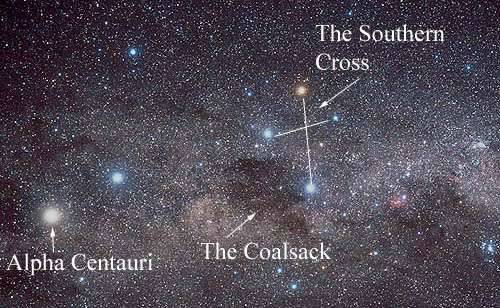
I decided t research the Alpha Centauri because my story will involve aliens and suprisingly enough this is one of the very few solar systems we know off, to add to that one that could hold life and be habitable for humans. I wanted to include a line in my comic as my story will involve the first contact with aliens, I wanted someone within the comic to mention that the warning sent in by the aliens will be both received by people on Earth and some alien species living in the Alpha Centauri so I decided to have a look at it hoping to find any cool facts but pretty much all I read I already knew. It’s not that shocking because this system is so far away it’s probably very hard to get any information about it at this point in time.
https://en.wikipedia.org/wiki/Alpha_Centauri
https://www.space.com/18090-alpha-centauri-nearest-star-system.html
https://www.space.com/32560-alpha-centauri-what-we-know.html
https://www.nasa.gov/mission_pages/chandra/images/alpha-centauri-a-triple-star-system-about-4-light-years-from-earth.html
https://www.newsweek.com/alien-life-alpha-centauri-nasa-wants-find-out-super-fast-2069-mission-752528
0 notes
Photo
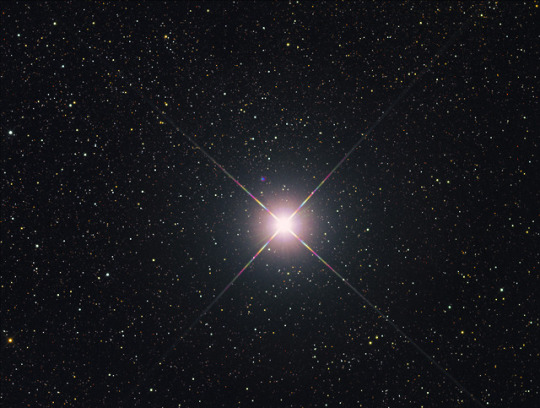
Alpha Centauri is the star system closest to our own solar system. It contains three stars: Rigil Kentaurus (or Alpha Centauri a), Toliman (or Alpha Centauri b), and a small red dwarf star by the name of Proxima Centauri (or Alpha Centauri c.) The Alpha Centauri system is a mere 4.7 light years away from our system, and though it is so small it is not even visible to the naked eye, Proxima Centaurus is the closest star to our own sun. The system itself takes up 430 TIMES of the circumference of Neptune. The entire system together makes up the constellation we know as Centaurus.
Though it is a star, in 2016 it was discovered that a small portion of Proxima Centauri (Proxima Centauri b) is inhabitable and could sustain human life. Could you imagine living on a whole different planet - much less one which not only a star, but a distinct part of a constellation we can see?
0 notes
Text
Let's rock Again!
A due settimane di distanza dal primo appuntamento, torna in scena sul palco del Tartara la musica indipendente di Let's Rock nelle serate di venerdì 31 marzo e domenica 1 aprile. La formula di festival proposta dall'Associazione Vitamina T con il patrocinio del Comune di Casale Monferrato, collaudata nel fine settimana di apertura, durante il quale si sono registrati circa 500 spettatori su due serate, verrà riproposta con l'alternarsi di musicisti del territorio, scelti tra giovani e “skilled”, di ospiti di rilievo e delle “interferenze creative”. Per la categoria giovani apriranno i concerti di venerdì 31 gli alessandrini Weekend Cigarettes. Il gruppo, inizialmente formato da tre nostalgici del punk, Alessandro Suffia (batteria), Matteo Zecchin (chitarra), Daniele Noto (chitarra), prende forma con l'arrivo di Francesco Santo (voce e basso) con il quale da subito inizia a lavorare su brani inediti. La band nasce con l'idea di divertirsi suonando canzoni del classico punk rock, rendendolo attuale e prendendo spunto da altri generi musicali. I primi 5 brani inediti vengono raccolti nel primo EP “Eureka!” uscito il 12 dicembre 2016, distribuito da Secret Sound Records. Ad esibirsi nella serata di venerdì per la sezione skilled sarà la band casalese VOODOO, composta da Vittorio Giorcelli, Stefano Cavaliere e Stefano Bollo, un vigoroso trio power rock nato nel 2009 che nell’arco di pochi anni riesce ad approntare un numero di inediti tali da poter presentare il proprio show dal vivo, contando esclusivamente sulla propria verve e dinamica. Nel 2013 esce il loro primo EP in studio, “Everybody Has To Go Someday” e il successo di critica e pubblico li porta nel 2014 a collaborare con Habanero Factory alla realizzazione del nuovo album “The Human Eater Turbine”. Nel 2016, iniziano a calcare palchi importanti e suonano al Big Bang Fest in apertura a Sick Tamburo e Il Teatro Degli Orrori, all'interno di un tour di 13 date. Ospite della serata da Pavia sarà il IN.VISIBLE, progetto solista di Andrea Morsero, già batterista di Stereo Plastica, Marti, Emily Plays, Kali, Distorsonic e molti altri. “IN.VISIBLE è il risultato di anni di ascolto, vibrazioni, palcoscenico”. Musicalmente è una miscela di sensazioni elettroniche, blues, acid pop, minimalismo e psichedelia. “Have you ever been?” è l'album di esordio del progetto IN.VISIBLE uscito nel 2014, registrato, mixato e prodotto da Lele Battista Ombre Studio. Alla fine del 2016 iniziano le sessioni di registrazione del nuovo album, anticipato dall'uscita del singolo “People are strange”. Per Let's Rock Andrea Morsero (drum machine e voce) sarà accompagnato da Fausto D'Annunzio (tastiere) e Daniele Catalucci (basso e voce). L'intrattenimento delle interferenze artistiche, a cura di Passi di Vita ONLUS, sarà affidato alle fantasie circensi di Saltinpakka e Lello Clown. Un primo intermezzo vedrà protagonisti una decina di ragazzi di Saltinspakka, progetto socio educativo che unisce Teatro Circo sociale e ludopedagogia, in un alternarsi di acrobatica e giocoleria, mentre in un secondo momento della serata sarà Raffaele Pecoraro, in arte Lello clown, a presentare un numero poetico di clownerie, giocoleria ed equilibrismo. Sabato primo aprile la kermesse proseguirà con i giovanissimi Toliman, band casalese composta da Riccardo Roggero (chitarra), Francesco Ottone (batteria), Giacomo Irrequieto (chitarra), Luca Mellina (basso) e Paola Urso (voce). Il gruppo nasce nel marzo 2016 come formazione strumentale, inizia ad esibirsi nelle manifestazioni locali e nell'ottobre dello stesso anno, con l'ingresso di Paola Urso, trova la lineup attuale. Le sonorità del loro progressive metal sono ispirate dal genere più classico, come King Crimson, Dream Theater, Rush e Neal Morse alle variazioni più recenti del genere, con influenze da Haken e Animals As Leaders, sino a sfociare nel Djent." Per la categoria skilled torneranno ad esibirsi i casalesi Van Gogh Post Scriptum: dopo l'esibizione a Let's Rock 2016 special edition come Diemmebi, Marco Deambrogo (chitarra e voce), Andrea Oliaro (basso) e Marco Vassallo (batteria), musicisti che condividono il palco e la vita da vent'anni, intraprendono un nuovo percorso musicale. La formazione power trio non lascia molto spazio ai fronzoli, ma va dritta al punto; alla ricerca di un approccio personale (ancor più che alternativo) in termini di scrittura e interpretazione, affonda le radici nella scena rock e cantautorale indipendente italiana, mantenendo la forma canzone come base su cui divagare passando dal pop alla psichedelia, senza dimenticare qualche passaggio più ruvido e qualche riff sferzante. Sulla scia di una ritrovata vena creativa scrivono i brani contenuti nel nuovo album Lovemarks: uno sguardo consapevole e disilluso alla società attuale, alla ricerca di una possibile alternativa. La serata del primo aprile vedrà esibirsi come gruppo ospite la band milanese tutta femminile Killin' Baudelaire. La nuova lineup, recentemente annunciata, è composta da Elisa “Helly” Scandella (voce), Martina “Nixe” Riva (chitarra), Alice “Lane” Pandini (basso) e Martina “Cleo” Ungarelli (batteria), quattro ragazze che unendo rock e metal alternativo alla passione per la letteratura, danno vita vita a questo nuovissimo progetto. “It Tastes Like Sugar” è il primo lavoro in studio della formazione: registrato presso i Magnitude Studios di Seregno, vanta la produzione artistica di Titta Morganti (Mellowtoy) ed è uscito lo scorso ottobre 2016 per Bagana Records. Il primo singolo ‘Wasted‘ ha ottenuto migliaia di visualizzazioni in una sola settimana, trovando spazio su diverse testate di rilievo (tra cui Metalitalia, Metallus, Metal In Italy, SpazioRock), su Radio Lombardia (LineaRock con Marco Garavelli) e sul network Sky. In apertura di serata, per le interferenze creative si esibirà l'ensemble percussionistico "Albero in Fiore Rhythm Society ", diretto da Chicco Accornero, insegnane di batteria, in collaborazione con l'Istituto Musicale "C. Soliva" di Casale. I ragazzi del Centro Diurno "Albero in Fiore" porteremo sul palco di Let's Rock un pò di ritmo e buone vibrazioni con i loro tamburi e le loro percussioni: surdo, tamborim, pandeiro, shekerè, darbuka, piatti, batteria, tom tom e bacchette di ogni genere in una piccola carrellata di ritmi e colori del mondo, contro tutte le barriere, sociali ed etniche Sul finale il DJ set a cura di Lisah Lupix prolungherà l'intrattenimento musicale della serata di sabato. Prossimi appuntamenti: ultimo week-end con Let's Rock in programma 5 e 6 maggio:* -Venerdì 5 maggio: - The Aunt Mary (Casale) sezione giovani - Fonema MC (Casale) sezione skilled - Carlot-ta (Vercelli) sezione ospit - Interferenze: scuole di danza STEP OUT + DANZARTE * -Sabato 6 maggio: - The Castillos (Casale - Torino) sezione giovani - Negromanti (Casale) sezione skilled - B.A.D.S. (Casale) sezione skilled - Ila Rosso (Torino) sezione ospiti - Interferenze: Allievi istituto musicale Soliva + CORTIcircuito http://dlvr.it/NlXhGT
0 notes
Photo
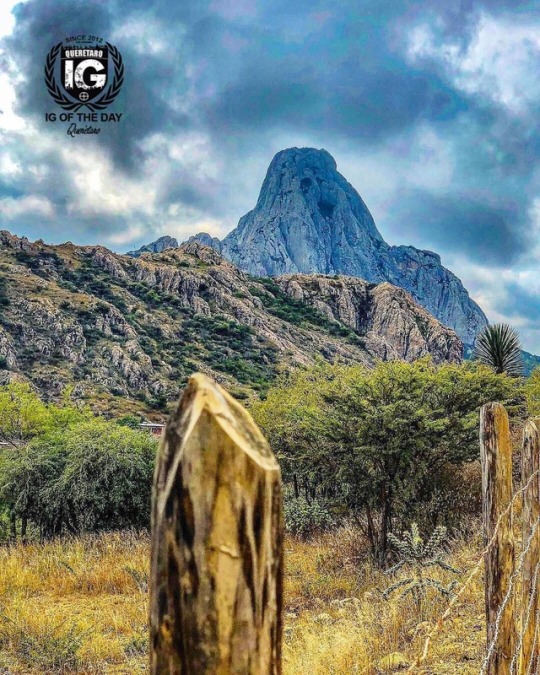
PRESENT IG OF THE DAY P H O T O | @lordvandav S E L E C T | @bulnuri L O C A T I ON | 📍San Antonio de la Cal, Qro. 🇲🇽 D A T E | 16.12.2018 F E A T U R E D T A G | #ig_queretaro #queretaro F O L L O W U S | @Ig_queretaro @igworldclub @ig_mexico_ @photocaminantes . . . #mexico 🇲🇽 #ig_mexico #igworldclub #igersxmexico #ig_worldclub #worldcaptures #mexico_maravilloso #mexicodesconocido #loves_madeinmexico #pasionxmexico #loves_mexico #mexinstantes #igersmexico #vive_mexico #mextagram #wu_mexico #gf_mexico #reporteqro #queretaro #igersqro #ig_italia #igmasters #natgeomx #ig_españa #igersmilano #picoftheday #igerscatalunya #primerolacomunidad 🇲🇽 (en San Antonio de La Cal, Toliman) https://www.instagram.com/p/BrdKBIXHfr1/?utm_source=ig_tumblr_share&igshid=lwrtijo9chcq
#ig_queretaro#queretaro#mexico#ig_mexico#igworldclub#igersxmexico#ig_worldclub#worldcaptures#mexico_maravilloso#mexicodesconocido#loves_madeinmexico#pasionxmexico#loves_mexico#mexinstantes#igersmexico#vive_mexico#mextagram#wu_mexico#gf_mexico#reporteqro#igersqro#ig_italia#igmasters#natgeomx#ig_españa#igersmilano#picoftheday#igerscatalunya#primerolacomunidad
0 notes